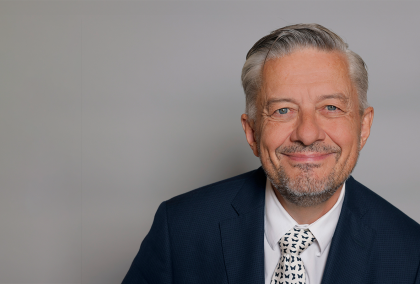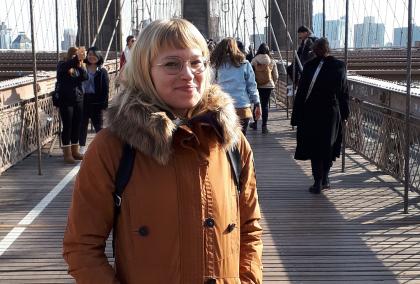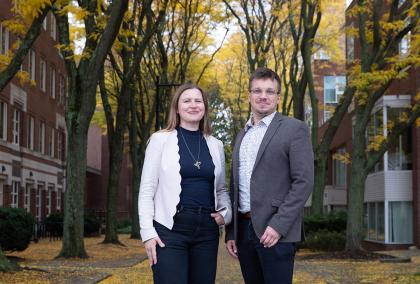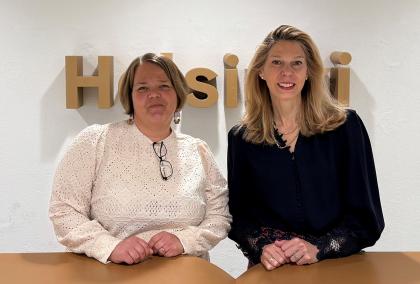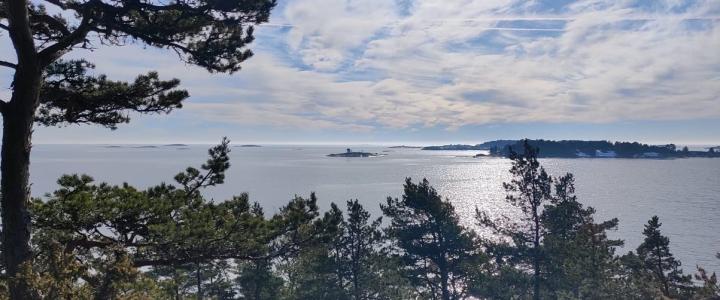

I’ve always been motivated by the power of science to provide information that can fuel solutions, especially around challenges facing our coastal waters. The Fulbright Finland Foundation’s Seeking Solutions for Global Challenges Award created the opportunity for me to explore comparisons between the Baltic Sea and Chesapeake Bay, two ecosystems at similar inflection points in efforts to restore water quality impaired as a consequence of land-based nutrient pollution.
These two systems have also been the focus of large-scale restoration efforts for decades. Shifts in agricultural practices in the last century, especially those encouraged by technological advances to synthesize N² gas from the atmosphere into biologically available anhydrous ammonia used as fertilizer, have dramatically increased nutrient inputs to coastal waters.
Combined with urbanization that concentrated populations in a few locations and increased wastewater inputs, the Baltic and Chesapeake Bay have both experienced declines in water quality. This decline is brought about by the process of eutrophication: the production of excess organic matter. In many coastal waters, eutrophication is a consequence of excess nutrient pollution that fuels water column phytoplankton blooms, decreasing light availability to the sediments, and depleting dissolved oxygen when the blooms die causing large-scale “dead zones”.
My scientific mentors spent much of their early careers documenting these processes and helping natural resource managers to understand what was causing dramatic shifts in their coastal ecosystems.
The Baltic Marine Environment Protection Commission – also known as the Helsinki Commission (HELCOM) – was established in 1974, a remarkable effort bringing together all Baltic coastal countries into a signatory agreement to protect the Baltic Sea from pollution. Within a decade, the states in the Chesapeake Bay watershed had also come together to sign the Chesapeake Bay Agreement. These two efforts have expanded and grown into focused efforts to reduce pollutants to both systems.
Today, both the Baltic and Chesapeake Bay have achieved a ~50% reduction in nutrient inputs, largely by implementing advanced wastewater treatment technologies. Now the work begins on the more diffuse forms of pollution, those not coming from the end of a pipe but instead traveling as runoff from the land, largely from agriculture.
It is also a complication that in the same time period between the early 1980s and now, we have documented shifts in climate that have increased water temperatures, changed precipitation and freshwater inputs, and even altered wind conditions that can affect coastal water movement. This shifted baseline means that simply reducing nutrient inputs to historic levels may not result in desired restoration targets. These are the challenges I am working to understand as part of a comparative research effort between the Baltic and Chesapeake Bay.
I am joined in this effort by colleagues here at the University of Helsinki’s Tvärminne Zoological Station; the Baltic Sea Centre in Stockholm, Sweden; the Norwegian Institute for Water Resources; Aarhus University in Denmark; and colleagues at my home institution. We are writing a paper together, and have assembled a special session at the upcoming Chesapeake Research Symposium. I have also been working with my host, Dr. Aleksandra Lewandowska, to begin pilot experiments we hope will provide data to support a larger investigation into the complex interactions among nutrient reductions, climate, and biodiversity shifts in the plankton community. All of this work I am investing in with the hope and expectation that my career will continue to be enriched by research in the Baltic and Finland in the coming years.
As an awardee taking advantage of the flex option, I also want to emphasize how valuable this format has been for me to participate in the Fulbright Program. My partner has an architecture business I could not have taken him away from on a full, year-long sabbatical. I have an extensive research program in Maryland that would also have made stepping away for an extended period difficult. The four month program split into two visits was ideal. My family has still been able to experience Finland; my four-year-old daughter is enrolled in the local daycare and has settled in well for this second visit! I know giving them this taste of the culture and people has also set the stage for return visits and a relationship with Finland I hope will continue long into the future.
Lora Harris
2021-22 Seeking Solutions for Global Challenges Award, Tvärminne Zoological Station, University of Helsinki
Professor, University of Maryland Center for Environmental Science
Read the whole Fulbright Finland News magazine 1/2022!
